General findings
This section summarises many general findings from the programme of research with cross references to Research Mongraphs and journal articcles. The detailed refernces are listed on the outputs by author page.
Important observations arising from the research include but are not limited to:
- Increased enrolment rates have often been accompanied by increased drop out and greater number of over age children who are more likely to be at risk of failing to complete basic education.
In many school systems where there has been a concerted effort to increase enrolment rates rapidly short term gains have masked very uneven patterns of enrolment across different grades, persistently high drop out, and increasing proportions of over age children. This is clearly the case in a number of Sub-Saharan African countries (Lewin and Sabates, 2011; Lewin, 2009; Somerset, 2007). It appears also to be the case in some northern states in India (Lewin, 2011b).
In some countries gross over enrolment in Grade 1, high drop out from middle grades, and slow improvements in enrolments and completion rates at Grade 5 and above have persisted for more than a decade. Unbalanced systems have settled to new equilibria that enrol more children but may fail to generate commensurate gains in completion rates. Evolution through characteristic patterns of enrolment types (Lewin, 2007a) has failed to occur in several low enrolment countries.
- Most children out of school are drop outs, not those who never enrol.
This is true in Bangladesh, India, and Ghana and in slightly different ways in South Africa (Ahmed et al., 2007; Govinda et al., 2007; Akyeampong et al., 2007; Motala et al., 2007). It is also true in many other low income countries (Lewin and Sabates, 2011). Exclusion from education is therefore more often a result of drop out than of initial and permanent exclusion. Most children below the age of 15 who are currently out of school have attended school but have not completed basic education. A 5% annual drop out rate (which is common in many countries) results in less than 75% of those who enrol reaching Grade 6 and less than 65% reaching Grade 9.
Drop out and lack of progression through to the end of the basic education cycle is the biggest challenge for universalising access to basic education in the countries in which CREATE has worked. Unless drop out is reduced there will always be generations of out of school children of school age replenished by new drop outs. Achieving the MDGs and EFA depends on much higher levels of retention, as well as efforts to include the minority who never enrol.
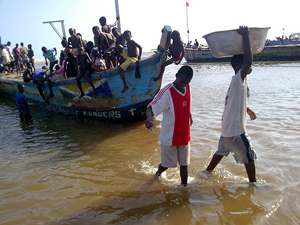
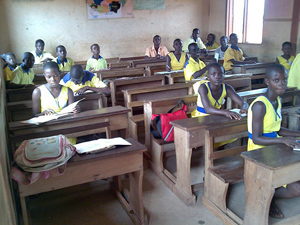
Most out of school children in Ghana have dropped out after enrolling for a period. In Mfantesman district in Southern Ghana, many children drop out of school to work in the local fishing industry. They contribute to their household income. The times of day and year when children work don’t fit well with the school timetables.
Drop out may be short term and coincide with specific activities such as helping to haul fishing nets in and process the catch when fishing boats return. Drop out can also be connected to particular events in the children’s homes or at school such as family deaths or illnesses. Longer term drop out may be connected with seasonal patterns of work or migration. Some families in Mfantesman migrate to places along the coast for seasonal fishing work, and children may miss months of school (Ananga, 2011). All these types of drop out need not be permanent, although many children do drop out of school permanently, especially if they get a job that earns them money. Some who fish earn more than their teachers!
- Children who never enrol are in an important group since their right to access to education is completely compromised.
In the north of Ghana more than 40% of children in some areas are not in school at the age of 8 and many enter school over age. In the south, it appears that less than 10% fail to enter school at all indicating the success of one aspect of EFA programmes (Rolleston, 2009). We have been able to identify never enrolled and non attending children in our research sites and we have insights into their characteristics from secondary data at national and regional level. For example, in the Northern Region, a fostered child has a chance of ever attending school 19% lower than a biological son or daughter, other things being equal (Rolleston, 2010).
However, in many cases there is no reliable national data from any of our research sites that adequately captures many marginalised groups e.g. illegal internal and international migrants, children in socially excluded groups, some children with disability, illness, HIV and other socially exclusive conditions. These children can only be captured through community level enquiry, and commitment to identify and act to deliver rights to education. Often, but not always, those never attending are more likely to be children from poor households with larger numbers of young children, girls, children with disability, orphans, and are likely to be concentrated in some geographic areas.
Children who never enrol are in households where either i) they could have enrolled but did not where the best solution is to extend the reach of the existing system and understand and act on the reasons for non enrolment or ii) they are located where normal enrolment is not feasible and the best solutions may require novel approaches e.g. the School for Life in northern Ghana (Akyeampong, 2007; Arkoful, 2010). Within households, there may be considerable variation between children in terms of enrolment. Rolleston (2011b) found that non-fostered children living in households where some fostered children lived had the greatest chance of being enrolled and worked the least number of hours compared to other groups of children.
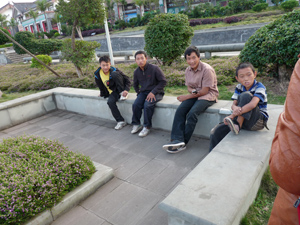
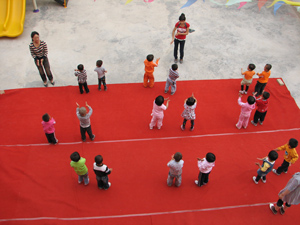
- “Silent exclusion” is important in all research sites. This refers to children nominally enrolled but learning little and at risk of drop out.
Many learners are seriously over age (Lewin and Sabates, 2011; Rolleston, 2009; Ampiah, 2011; Motala, 2009; Govinda et al., 2011; Hossain, 2011) attend infrequently (Govinda and Bandyopadhyay, 2011; Rolleston et al., 2010), and score poorly on achievement tests (Taylor et al., 2010; Ampiah et al., 2011).
Silent exclusion is also correlated strongly with poverty and poor health (Hossain and Zeitlyn, 2010). Increased physical access has resulted in large numbers failing to reach minimum learning goals and many being two or more years below norms expected levels of performance (Gilmour and Soudien, 2009, Taylor et al., 2010; Ampiah et al., 2011).
A working definition of silent exclusion identifies children at risk as those who are attending less than 90% of timetabled time, are over age by two years of more, have repeated more than one year of school and who are performing two or more grades below the norm in language and mathematics. Using these indicators about 20% of primary school children in the Bangladesh sample were silently excluded and at risk of drop out (Hossain and Zeitlyn, 2010:7). These children have physical access but not the kind of access that allows them to learn.
- Over-age entry to primary school and delayed progression are substantial impediments to the achievement of EFA in Ghana, India and Bangladesh, and remain significant in South Africa despite the formal commitment to automatic promotion.
If children do not enrol by the age of ten it is unlikely that they ever will (see Figure 8 above) (Lewin 2007a; Akyeampong et al., 2007; Rolleston et al., 2011). Late entry arises from several factors including stunting, household labour, under valuing schooling, safety and lack of awareness of birthdates. The standard deviation of age in grade usually increases with grade (Lewin, 2009), except where there are strong selection effects at higher levels which result in over age children being excluded. Entering school late and being over-age increases the chances of drop out (Sabates et al, 2010:15).
Girls appear particularly vulnerable to drop out if they are over-age in communities where early marriage is common (Sabates et al., 2010; Taylor et al., 2010). In much, but not all, of Sub-Saharan Africa the preponderance of boys at secondary level is due mostly to the differential persistence to older ages of boys. Where completion rates are lowest, over-age enrolment is greatest.
There is some evidence that gains in enrolment rates have been achieved at the cost of greater proportions of over-age children enrolled. Thus improvement in the wealth gradient for being in school for the poorest children was accompanied by an increase in the likelihood of being over age in school, more so in Anglophone than in Francophone countries.
In two Anglophone countries, Malawi and Nigeria, the probability of being over age in school by three or more years has increased over the last decade. In Tanzania the situation is different, since all children have a lower probability of being over age, but the richest children gained much more rapidly. In Kenya, Uganda and Zambia the situation remained almost unchanged.
The wealth gradient for children who are over age by three or more years has become steeper in Malawi, Nigeria and Tanzania and remained unchanged in Kenya, Uganda and Zambia. It should have fallen in all cases (Lewin and Sabates, 2011). If this were transient it might not be surprising. However in some countries it appears to be a persistent effect. No high enrolment and high completion rate system has wide age in grade dispersion.
- Poor attendance of children and teachers results in the loss of large amounts of learning time, and is often associated with low achievement and repetition leading to over age enrolment.
Aggregate enrolment rate indicators conceal low levels of daily attendance, which can lead to poor achievement and drop out. In some systems, and in some schools in our case studies, child attendance may average less than 60% on a given day (Ampiah et al., 2011; Bandyopadhyay, Das and Zeitlyn, 2011). When this is coupled with irregular teacher attendance this may result in the loss of more than half of all learning time. Irregular teacher attendance was a problem in many places (Bandyopadhyay, Umabati and Zeitlyn, 2011; Alhassan and Adzahlie-Mensah, 2010).
In Sri Lanka where enrolment rates are high, poor attendance and low achievement are associated more strongly with school and community effects rather than household effects. Poor health is associated with low attendance. Household assets are associated with private tuition which is a predictor of achievement (Little, Indika, Rolleston, 2011).
Indicators of attendance have to be included in measures of progress towards the MDGs and EFA. Reasons for poor attendance are varied and include sickness, caring for siblings and relatives, seasonality, local opportunity costs for cash income, costs, transport issues, school discipline, and low achievement (Govinda and Bandyopadhyay, 2010).
School feeding appears to increase attendance in some cases but can have substantial costs. Poor attendance is often a a pre-cursor to drop out (Sabates et al, 2010) and happens in characteristic patterns which may be temporary or permanent and may be sporadic, linked to singular events, or long term and persistent, and may be associated with ambitions to drop in or to remain dropped out (Ananga, 2010). These different conditions have different causalities and link to different possible interventions.
On average as many as 50% of children may not be present on a particular day. The attendance register over a month in this school shows that more than two thirds are absent for more than 30% of the teaching time available. This is the equivalent of losing a day and a half a week or more. And this takes no account of teacher absences. Learning is compromised by such a large loss of time on task and levels of achievement correlate with absenteeism.
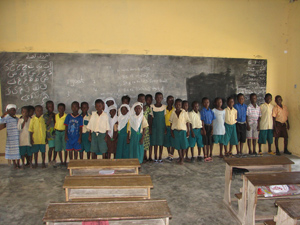
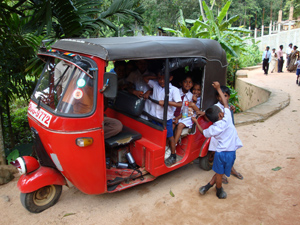
- Poor health and nutrition are related to late enrolment, low attendance, repetition, low achievement, and subsequent drop out in complex ways.
CREATE has developed a comprehensive state of the art review of evidence on the impact of health and nutrition on educational access, participation and achievement (Pridmore, 2007) and has extended this with insights from fieldwork which has included measuring Body Mass Indices in some sites, and through analysis of secondary data (e.g. Orkin, 2011; Sabates and Hernandez, 2011; Buxton, 2011). Poor health and nutrition clearly contribute to educational exclusion across the zones of exclusion(Hossain and Zeitlyn, 2011). Health shocks from (and before) birth may have enduring consequences – stunting is irreversible, cognitive damage from nutritional deficiencies may not be recoverable (Sood, 2010).
CREATE has collaborated with the “Young Lives” project funded by DFID. One result is Orkin’s work (2011) which shows how important it is to understand patterns of parental and child morbidity and how these interact with attendance and progression. Illness increases the likelihood that children become over age when schools require the repetition of a whole grade after a period of absence. The size of the illness effect on become over age was similar to the size of effect of being stunted in a large sample and has as much negative impact on access as being an orphan. Orkin (2011), Ananga (2011) and Ampiah and Adu Yeboah (2011) highlight the role of children in caring for sick relatives and the effects that these responsibilities can have on educational access.
- Disability is linked to higher probabilities of exclusion.
Croft (2010) has reviewed definitions and approaches, and identified key issues needed to achieve greater inclusion of disabled children and young people in learning and this work is complemented by Gifford-Lindsay’s study (2008).
Pedagogical approaches suited to circumstance and disability are critical to effective practice and depend on assumptions that differ across cultures. Widely the identification of disability is uneven and imprecise resulting in uncertain but barriers to access to those with disability. Specialised provision for recognised disabilities – speech, hearing, sight, mobility – appear often to depend on support from non state providers and policy on inclusion and mainstreaming those with disability in normal schools can be inconsistent and contradictory.
- Drop Out is linked to direct and indirect costs, income shocks, opportunity costs, household and paid labour, migration, morbidity and household health events, orphanhood, marriage and pregnancy, disability, distance from school, safety, perceived lack of relevance, poor quality schooling, teacher absenteeism and poor learning environment.
CREATE has identified many factors associated with drop out and push out (Hunt, 2008). The CREATE model predicts that drop out is more likely amongst those who enter school over age, who repeat grades, attend poorly, and are low achieving. Community and school data confirm these propositions (e.g. Sabates et al, 2010). Some school practices appear to encourage drop out. Uninspiring, uncomfortable, dangerous and violent schools put many children off (Sinha and Reddy, 2010; Williams, 2010). Corporal punishment remains widely used in Ghana and South Africa and can be a disincentive to return to school when absenteeism is punished (Alhassan and Adzahlie-Mensah, 2010). Bullying is associated with problems of sustained access to school (Dunne et al., 2010).
Temporary absence followed by repetition of a whole grade increases the numbers who are over age and who drop out (Orkin, 2011). Household welfare indicators are very strongly associated with enrolment in Ghana. A one unit increase in the log of household welfare is found to increase a child’s relative risk of being a drop out (zone 2 relative to zone 1) by 1.8 times. The same increase in welfare increases a child’s relative risk of being in zone 4 relative to zone 1 by 2.6 times and increases the relative risk of being in zone 5 by 3.1 times. With regard to completing junior secondary school, the relative risk was increased by 4.1 times.
The effects of occupation of the household head were even more significant. The children of public sector employees had four times less chance of dropping out than those of those not working, and nine times less chance of being excluded from secondary school (Rolleston, 2009b). Similar effects are evident in other data sets (Sabates et al, 2010, Reddy, 2010). And more qualitative data yields insights from about the dynamics of drop out and the inter relationships with practices at the community level (Laugharn, 2007; Cameron, 2010; Ananga, 2010).
- Expanding access to secondary schooling is critical to achieving universal access to primary schools.
Access to secondary schooling is becoming a greater determinant of life chances than completion of primary schooling in most poor countries. Those who progress to post primary education are much more likely to come from richer households and be urban rather than rural. Unless transition rates to lower secondary are high, demand to complete primary schooling will soften. Participation at secondary level also needs to grow fast enough to ensure the supply of new primary teachers needed to support universal access to primary school.
There are many other reasons to manage the expansion of secondary schooling, not least the critical importance to economic growth of ensuring that enough secondary educated graduates reach the labour market (Lewin, 2007b). Data from Kenya indicate how access to secondary schooling favours richer households and existing elites (Oketch and Somerset, 2010; Ohba, 2010). In Ghana 20% of secondary schools provide 75% of university entrants (Djangmah, 2011). In India costs remain a disincentive to enrol above Grade 8 (Siddhu, 2010; Lewin, 2011b). Expanded access requires curriculum reform to reflect the characteristics, aspirations and needs of new generations of students less selected than in the past. It will also need reforms in financing.
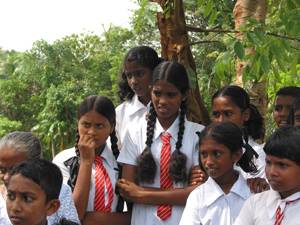
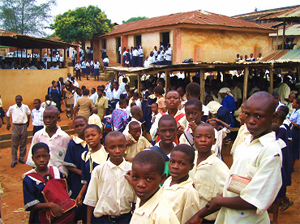
- School quality and school processes are inseparable from educational access and outcomes and are embedded in CREATE’s extended vision of access. Access requires learning that has utility using pedagogies that are effective and fit for purpose which result in achievement commensurate with grade level.
Several research outputs address quality and achievement issues. Govinda and Bandyopadhyay (2011) argue that what they call ‘the backward linkage between school quality and exclusion from schooling’ needs to be further examined, insisting, along with other CREATE researchers (e.g. Reddy and Sinha, 2010; Alhassan and Adzahlie-Mensah, 2010) that poor quality and unfriendly schools are putting children and families off and pushing them out of education. Alexander (2008) explores how educational quality in the classroom is conceived, indicated and measured and how this might be done better in the future. This work offers insights into “silent exclusion” and provides provocative discussion of quality, and of quality indicators and quality measures in the domain of pedagogy, offers a rich and detailed framework for thinking about and planning for education of quality for all children, including those at risk currently of falling within the zone of silent exclusion.
Pedagogy is often the missing ingredient in EFA discussions of quality which foreground indicators and outcomes, and largely ignore process. Indicators and measures are often confused though they are not the same things, and quality has to be judged in ways that are comprehensive, guard against evidential basis, have validity and reliability, give insight into impact, are manageable and appropriate to the context of use.
This links to other critiques of indicators of EFA progress (Lewin 2011d) that invite careful consideration of who needs to know what to improve quality. Other research insights relevant to quality include an analysis of bullying and its consequences (Dunne et al, 2010), an exploration of school based support for vulnerable children (Williams, 2010); insights into language policy and practice in South Africa (Lafon, 2009), and problems with age in grade progression that relate in part to the quality of learning and teaching. Hossain (2010), Taylor et al. (2010), and Rolleston et al. (2011) show how over age learners perform worse than those in the correct age for their grade and note that there is little or no pedagogic recognition of age grade slippage and needs for support for over age learners.
Alhassan and Adzahlie-Mensah (2010) provide insights into some practices amongst teachers that seem likely to undermine quality learning and diminish access. These include absenteeism and corporal punishment as well as poor pedagogic practices that place most responsibility for poor performance on children.
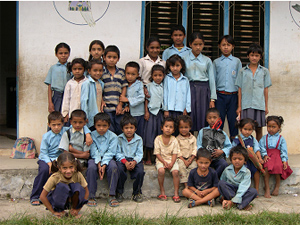
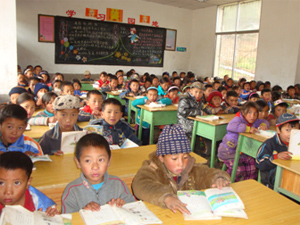
- Effective Small schools and Multi-grade Teaching and Learning are essential to reach those where school size is small.
Over 80% of primary schools in rural India have three or less teachers, but cover enrolment across five grades (Blum and Diwan, 2007; Little, 2008; Little, et al., 2008). Unless multi-grade pedagogies are used, as in Activity Based Learning (ABL) in Tamil Nadu (Kumar, 2010), learning time will be lost. Small schools are common and necessary at primary level in low population density areas.
Expanded access to lower secondary schooling creates an additional challenge for the design and operation of small day secondary schools at sustainable costs. Though boarding is an option it is not one that is likely to be cost efficient on a large scale, unless organised in the way it is in rural China (Lewin, 2011e). Multi-grade schools require investment in suitable core curriculum, appropriate learning materials, and the development and support of multi-grade pedagogies (Little, 2008b). There is no reason why they should be more expensive in operation than monograde once the start up costs have been covered.
Innovations in pedagogy can help encourage more effective learning. Activity Based Learning in Tamilnadu has developed from the experimental schools in Rishi valley in Andhra Pradesh. The pedagogy is based on the use of learning ladders that define tasks linked to learning resources. Peer learning is encouraged and children work together in small groups. Learners progress through tasks at different speeds depending on their capabilities. Teachers facilitate and monitor learning. Achievement is registered on charts on display in the classroom so every child can see how they are progressing and be rewarded in moving on to the next level. Teachers are supported by advisory teachers who rotate between schools to give advice and in-service training.
BRAC in Bangladesh organises over 30,000 schools which follow a well established pattern of learning and teaching. Each school admits about 30 children over a three year cycle and the class group progress together. Teachers are usually local residents with some secondary schooling who are supported and trained by BRAC field staff who meet regularly with them. Each BRAC classroom is equipped with a standard set of learning materials and writing equipment. Children’s work is displayed to encourage participation and celebrate progress.
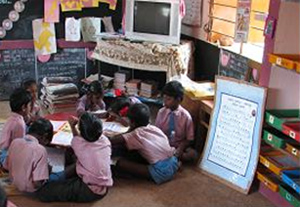
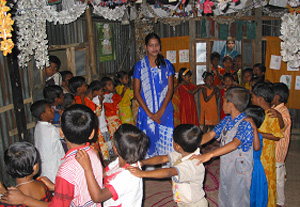
- Teacher supply and deployment can be insufficient, unbalanced, inequitable and inefficient.
Circumstances differ widely between countries and regions and modalities for training new teachers are also greatly varied. Teacher’s salaries relative to local incomes cover a wide range of ratios and influence demand for initial training and subsequent motivation. As communication infrastructure has improved it appear to have become more common in some areas for teachers to live off site and commute to rural schools from small towns and urban areas. This may dilute relationships between teachers and communities, especially where teachers are drawn from different castes and classes than the children they teach (Bandyopadhyay, Umabati and Zeitlyn, 2011).
Full time pre-career residential training of teachers is expensive. Case study sites provide evidence of uneven posting of teachers, teacher absenteeism, low time on task, and disinterested and unimaginative pedagogy (Govinda et al., 2010; Bandyopadhyay, Umabati and Zeitlyn, 2011; Alhassan and Adzahlie-Mensah, 2010; Akyeampong, 2011). Pupil teacher ratios vary widely across and within case study districts from below 10:1 to over 100:1 with consequences for learning and teaching, and acute shortages of teachers persist in some areas, and coexist with surpluses in others. More efficient methods of training and deployment are needed to support EFA at sustainable costs (Bandyopadhyay, Umabati and Zeitlyn, 2011).
- Migration, seasonality and nomadic livelihoods generate major challenges for universalising access.
Migration (cross border, internal, related to urbanisation and internal displacement) is common in sub-Saharan Africa and South Asia and is driven by a range of different motivations that include asylum seeking from oppression and exclusion, labour migration, and family affinity. Children may move to be fostered within households and fostered children migrate to earn money to secure a good marriage (Rolleston, 2011b), they may be accompanied by parents or leave parents behind (Buckland, 2011; Shindler, 2010), and some children are left behind by migrating parents and may be cared for by relatives or placed in boarding schools (Lewin, 2011e).
Information on migrants is very uneven and hampered by the illegal nature of some of it, and the risks of persecution associated with asylum seekers fleeing violence. Seasonality is often associated with temporary migration and this can disrupt schooling (Ananga, 2010; Hadley, 2010).
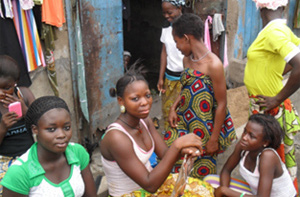
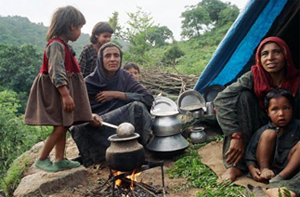
Nomadic communities are especially challenged by conventional school systems predicated on sedentary livelihoods and a range of different strategies can be adopted to deliver basic education for them (Sharma, 2011). Hadley (2010) notes that agricultural seasonality is rarely linked to discussion of education policy in Sub-Saharan Africa.
Yet it is clear that income poverty and labour demand vary with the agricultural seasons and have implications forhousehold income, child labour, gender inequalities, migration, malnutrition, anaemia and malaria. These in turn have implications in each of CREATE’s zones of exclusion addressing initial enrolment, school attendance, dropout, repetition and cognitive development and learning.
Poorly planned mass education policies can unintentionally damage rural livelihoods by forcing children and households to decide between education and work. Schools run by BRAC operate a seasonally-adjusted school calendar designed through consultation with parents and the wider community. State-led reforms of the school schedule or fee due-dates in Brazil, Colombia and the Gambia have proved successful in boosting enrolments and lowering drop-out rates.
- Non-state providers make contributions to educational access but remain much less important than public authorities
There are very diverse patterns of provision supported by NGOs (Rose, 2007a, b). At primary level in Ghana and South Africa NGO capacity is a small proportion of total provision. In South Africa non-state providers only account for about 5% of enrolments and most of these are in high cost private schools (Lewin and Sayed, 2005; Motala, 2008).
NGOs come in many forms. Non-profit varieties include faith based, philanthropic, community supported, and corporate forms (Rose, 2007b). BRAC is a very large scale not for profit provider with a unique pedagogic programme which provides access to education in rural Bangladesh, alongside a range other NGOs (Ahmed, 2007; Sabur et al., 2009). 40% of children in Bangladesh go to schools managed by non-state education providers, although only 15% are in schools not funded by the state (Sabur and Ahmed, 2010:8).
Key issues are whether different NGOs should be encouraged to deliver service or complement those provided by the state, and whether the state or NGOs should be the provider of last resort. Large-scale public subsidy of such NGOs is unlikely to be the strategy of choice.
- Private for profit schools have provided high cost, high quality schooling to a small minority of children. The limits to growth of such schools are determined by costs and household income. Unsubsidised private schools adopting standards and salaries similar to government primary schools are largely unaffordable in sub-Saharan Africa for households below the second quintile of income.
At secondary level households below the first quintile are likely to be excluded (Lewin, 2007e). Empirical evidence from India shows conclusively that the poorest cannot access low price private schools in rural areas and that the development of such schools for richer parents has resulted in an almost complete separation of the schooling of the richer children from that of the poorest (Härmä, 2010; Siddhu, 2011). The poorest, remotest areas in need of more education facilities are often not served by private providers, while wealthier areas with already adequate state provision have most private providers (Govinda and Bandyopadhyay, 2010a). In Ghana low price private schools also do not generate access to the poorest (Akaguri, 2010).
In both countries, private school teachers may be paid below minimum wage levels and a fraction of the salary of government teachers – as little as one twentieth in some part of India. The conclusion is that private providers (i.e. unsubsidised, for profit) will only contribute on the margin to achieving EFA and the MDGs. Private providers will not be the provider of last resort to the poor and will predominantly capture differentiated demand from failing public providers amongst households with relatively high income (Lewin, 2007e).
In most poor countries private schools have a long history of providing high quality and high cost access to education to elites. Economic liberalisation has encouraged the growth of low fee private schools which may be attended by those from households from lower quintiles of income.
Such schools are rarely affordable by the poorest. Teachers in such schools are often paid a fraction of the salary of a government teacher, and are much less likely to be qualified. They are often located in temporary structures and buildings designed for other purposes. Some are able to produce better attendance and achievement than in government schools as a result of paying teachers by the lesson or by the day. Low fee private schools run for profit are unlikely to be the providers of last resort to the most vulnerable communities. Their growth may well be a signal of state failure to provide basic services. No richer countries have adopted private fee paying primary schooling to reach out to the relatively poor.
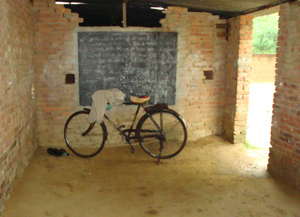
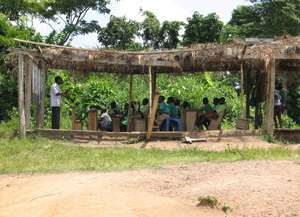
- Equity in access remains elusive. Access to education remains strongly associated with household wealth despite commitments to pro-poor policies and investment of resources. Inequity is manifested itself in terms of socio-economic indicators, regional disparities, urban – rural differences, gender discrimination and social exclusion.
Evidence from 13 sub-Saharan African countries using national data from the 1990s and 2000s shows that though overall participation has increased, the chances of the poorest being enrolled relative to the richest have generally not improved substantially, and in some cases have deteriorated. Reductions in the number of children out of school have in many cases been accompanied by an increase in the proportion of children over age for the grade in which they are enrolled.
Poorer children are more likely to be over age and unlikely to complete schooling especially if they are girls. Girls are more likely to be out of school than boys in most of the Francophone countries but not in most of the Anglophone countries. In all the Francophone countries in the sample rural children were more likely to be out of school, but this was only true in one Anglophone case. Rural children remain more likely to be overage (Lewin and Sabates, 2011).
Data from Bangladesh show that inequalities have also persisted in access to education with the poorest being excluded in greater proportions in all the zones of exclusion (Hossain and Zeitlyn, 2010). While urban dwellers are regarded as better off, the lack of schools to service urban slums and inability of the urban poor to afford private providers means that they are often completely excluded (Cameron, 2010).
In India, relatively poor access indicators for Muslims (Härmä, 2010), low castes, tribal groups (Sedwal and Kamat, 2008) and girls (Bandyopadhyay and Subrahmanian, 2008) show the powerful effects of social exclusion. Regional disparities in India also mean that some states are doing well while other lag behind (Lewin, 2011b) and even within states, remote areas or regions inhabited by minority groups may be poorly served by education infrastructure (Govinda and Bandyopadhyay, 2010a).
The message is clear. Though there has been progress, it falls far short of the gains that were anticipated. In a small but worrying number of cases the gains have been small or negative. In others much more progress is needed to achieve universal access with equity and to close the gap between the poorest and other households.
- Some indicators of access to education are not fit for purpose. Average Gross and Net Enrolment Rates (GERs and NERs are poor indicators insensitive to plausible changes in status over short periods and contradictory in how they change when system performance is improving. GERs and NERs can increase or decrease over an educational cycle when participation is improving depending on changes in the proportion of over age children within the cycle.
They should be replaced by grade specific enrolment rates and completion rates. Gender Participation Indices (GPIs) may mislead if there are unequal numbers of girls and boys in the school age population. The Education Development Index (EDI) used by the Global Monitoring Report (GMR) is a composite indicator which is not sensitive enough to inform policy and it cannot therefore be used for targeting (Lewin, 2011d). Many grants and loans have inappropriate conditionalities and performance indicators.
More generally data on out of school children and drop outs is inadequate to inform evidence-based planning. More investment is needed to provide data to national and local decision makers. There are new possibilities that are worth piloting e.g. internet based school level daily returns of attendance of students and teachers linked to supportive advisory and inspection systems.
- Physical access and supply side problems - insufficient schools, too few qualified teachers, poor quality learning space - remain a serious constraint on realising equitable access to basic education for all.
Our case studies identify schools which have no clean water or sanitation, no electricity, poor physical conditions which compromise learning, too few classrooms, and over size classes sometimes with over 100 children to a room or taught outside (Govinda and Bandyopadhyay, 2011; Williams, 2010). There are also regions in where there are simply not enough schools within reach of populations (Siddhu, 2010; Govinda and Bandyopadhyay, 2011; Cameron, 2010).
It is a fundamental criteria for meaningful access that physical facilities meet basic standards that should include at minimum clean water, sanitation, safe learning space with light and ventilation and no environmental hazards, location within reasonable travel distance, appropriate furniture and equipment, adequate supply of learning materials including books, blackboards and essential teaching aids, sufficient classrooms and teachers to organise classes with no more than 40 children, adequate local accommodation for teachers, and access to modern communication system.
Thus, school building programmes linked to school mapping remains essential to ensure access to adequate school space in accessible locations. Investment is needed in learning materials and curriculum fit for purpose.
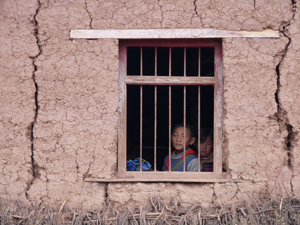
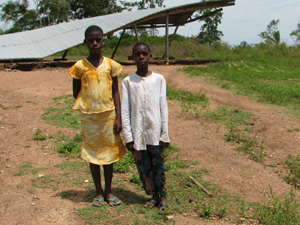
- Demand side problems – rising opportunity costs, lack of perceived relevance and early marriage - are growing in importance as enrolment rates increase and basic education is extended to include Grades 9 or 10.
CREATE research highlights drop out because of poverty (Sabates et al, 2010), opportunity costs in local labour markets (Ananga, 2011), lack of perceived benefits, and lack of relevance, poor school quality (Govinda and Bandyopadhyay, 2011). These reasons are visible especially amongst older children and their parents who question the value of completing a full cycle of basic education for some children and who have greater pressures on them to marry or contribute to the household economy.
EFA is unachievable without understanding these problems. Effective demand problems are evident in upper primary and lower secondary, and amongst older children (Ananga, 2011).
- Costs and financing of primary schools remain problematic and the non-tuition fee costs to households of primary schooling are becoming far more important for exclusion than tuition fees.
Bangladesh (Hossain and Zeitlyn, 2010), India (Govinda, 2011) and Ghana (Akyeampong, 2011) have tuition fee free primary schooling, as does South Africa for schools in the poorest three quintiles (Motala et al., 2007). However it is clear that informal and additional fees are charged widely for services, and other contributions are invited or expected. Other costs to households can be high (transport, uniforms, learning materials, food) (Akaguri, 2010).
Capitation has been introduced in some countries (e.g. Ghana) with the expectation that this income to schools will replace foregone fee income after tuition fees are abolished (Akyeampong, 2011). It is not clear that capitation has been sufficient. In the case of Ghana subsidies have been made available to all schools with the expectation of fee free schooling but this has in fact subsidised the relatively rich more than the relatively poor. Those from richer households participate more and longer.
- Secondary school financing remains central to problems of expanded access through to the end of lower secondary school. Mass secondary education in sub-Saharan Africa is unattainable at current levels of cost and teacher productivity for reasons of demography, income distribution, and teacher labour costs. No country with a public cost per student ratio of secondary to primary of more than 2:1 is likely to provide mass access to secondary schooling.
No household much beyond the 20th percentile of household income will be able to afford unsubsidised private secondary schooling in much of sub-Saharan Africa. Nor will such households be able to afford public secondary schooling as currently configured with the costs that are incurred by households.
In South Asia affordability tends to be greater because the labour markets contain more educated members willing and able to teach for lower relative wages. Nevertheless, wholly unsubsidised schooling is likely to be unaffordable below the third quintile of household income at primary and the second at secondary (Lewin, 2011b). Studies of access to secondary school (Siddhu, 2010; Ohba, 2009) indicate how costs constrain choice, exclude many, and condition expanded access.
- The sustainability of EFA depends on effective long term planning that recognises demographic certainties, financial realities, lead times for expanded service delivery (teacher training and deployment, classroom construction), and forward liabilities, especially those related to expanded secondary schooling
“Big push” programmes rarely generate sustained gains unless they are accompanied by long-term planning and resource allocation. They risk degraded quality and greater levels of inequality. They may also be accompanied by failing demand related to falling quality and a flow of public costs that will becomes unsustainable without very high levels of external dependence.
More balanced investment is needed between educational levels (primary, secondary, higher etc) than normative benchmarks for investment in primary by the FTI and others suggest. EFA will not be achieved, and nor will gender equity at primary and secondary school, with 60% or more of resources allocated to the primary cycle (Lewin, 2007 a, d).